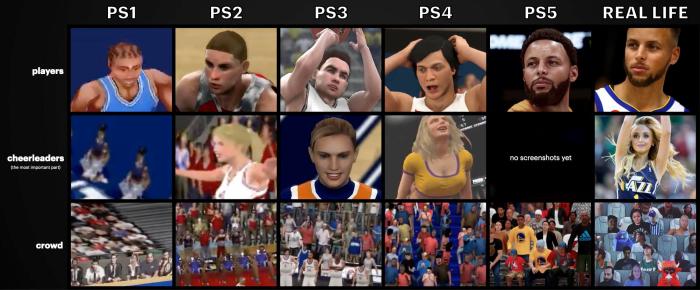Ps2 vs ps1 graphics – The evolution of gaming graphics took a significant leap with the introduction of the PlayStation 2, marking a stark contrast to its predecessor, the PlayStation 1. This article delves into the graphical enhancements that set the PS2 apart, exploring the advancements in resolution, texture quality, lighting, character models, and special effects that defined a new era in gaming visuals.
PS2 vs PS1: A Graphics Comparison

The PlayStation 2 (PS2) and its predecessor, the PlayStation 1 (PS1), marked significant milestones in the evolution of console graphics. While both consoles shared some fundamental design principles, the PS2 introduced a host of technical advancements that pushed the boundaries of visual fidelity.
Graphics Comparison
One of the most noticeable differences between the PS1 and PS2 was their resolution. The PS1’s maximum resolution was 640×480 pixels, while the PS2 could output up to 1280×1024 pixels. This increase in resolution resulted in a sharper and more detailed image, particularly noticeable in games that featured large, open environments.
The PS2 also introduced a number of graphical improvements that enhanced the overall visual experience. These included higher-quality textures, which gave objects a more realistic appearance, and more advanced lighting and shading techniques, which created more realistic shadows and highlights.
Technical Enhancements
The PS2’s graphical advancements were made possible by a number of technical enhancements. The PS2’s Emotion Engine processor was significantly more powerful than the PS1’s R3000A processor, and it also had more memory, which allowed it to store more detailed textures and models.
These technical enhancements enabled the PS2 to create more detailed and immersive environments. Games such as “Grand Theft Auto III” and “Metal Gear Solid 2: Sons of Liberty” showcased the PS2’s capabilities, with their large, open worlds and realistic character models.
Lighting and Shading
The PS2’s lighting and shading techniques were also a major improvement over the PS1’s. The PS2 introduced real-time lighting, which allowed objects to cast shadows on each other and the environment. This created a more realistic and immersive experience, as it allowed for more dynamic and believable lighting effects.
Games such as “God of War” and “Shadow of the Colossus” made excellent use of the PS2’s lighting and shading capabilities, creating some of the most visually impressive games of their time.
Character Models and Animations, Ps2 vs ps1 graphics
The PS2’s character models and animations were also a major improvement over the PS1’s. The PS2’s increased polygon count allowed for more detailed character models, and its skeletal animations allowed for more fluid and realistic movement.
Games such as “Final Fantasy X” and “Tekken 5” showcased the PS2’s capabilities in this area, with their detailed character models and lifelike animations.
Special Effects and Particle Systems
The PS2 also introduced a number of new special effects and particle systems that could be used to enhance gameplay and visuals. These included particle systems that could create realistic smoke, fire, and water effects, and special effects such as bloom and motion blur that could add a cinematic touch to games.
Games such as “Ratchet & Clank: Up Your Arsenal” and “Gran Turismo 4” made excellent use of the PS2’s special effects and particle systems, creating some of the most visually stunning games of their time.
Drawbacks and Limitations
Despite its graphical advancements, the PS2 was not without its drawbacks and limitations. The PS2’s limited memory meant that developers had to make trade-offs between graphical quality and other features, such as gameplay or level size.
Some games, such as “Grand Theft Auto: Vice City,” sacrificed graphical quality in order to achieve larger and more detailed worlds. Others, such as “God of War,” focused on graphical fidelity at the expense of gameplay variety.
Common Queries: Ps2 Vs Ps1 Graphics
What was the most significant graphical improvement in the PS2 compared to the PS1?
The PS2 introduced a significant increase in resolution, from 320×240 on the PS1 to 640×480 on the PS2, resulting in sharper and more detailed visuals.
How did texture quality impact the visual experience on the PS2?
The PS2’s improved texture quality allowed for more realistic and immersive environments, with textures that were less pixelated and muddy than on the PS1.
What was the impact of real-time lighting on PS2 games?
Real-time lighting on the PS2 enabled more dynamic and realistic lighting effects, such as shadows that moved and changed as objects moved, enhancing the overall visual quality.

